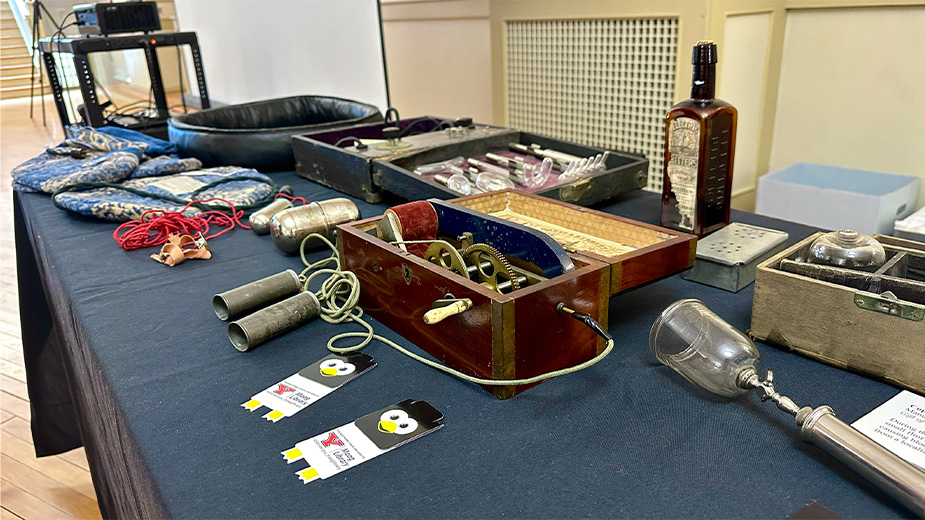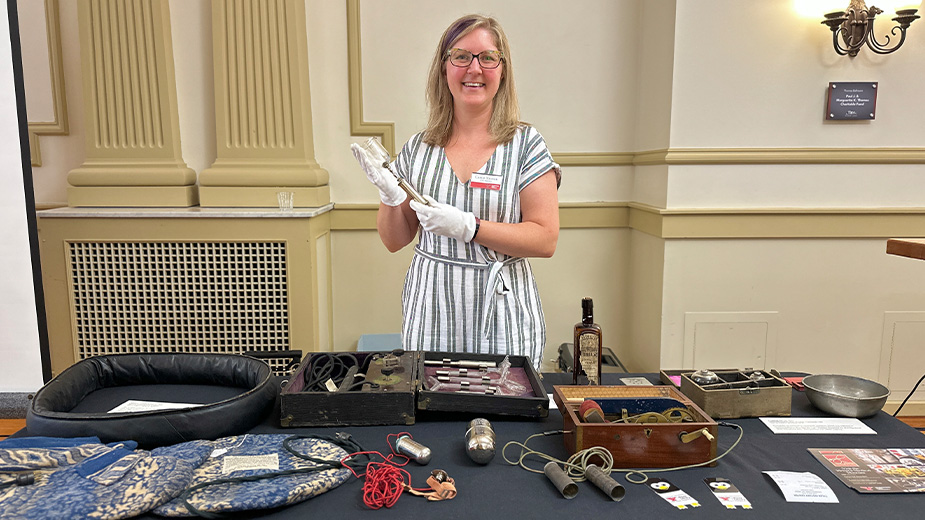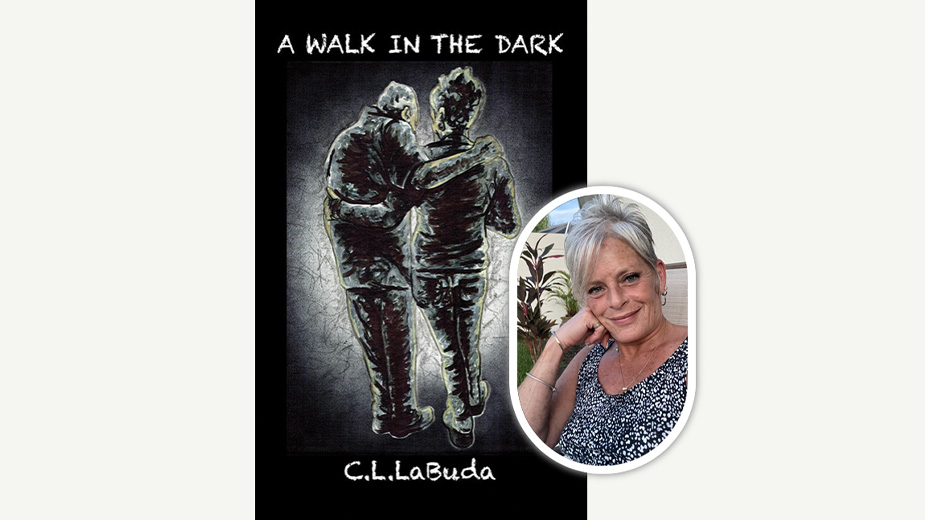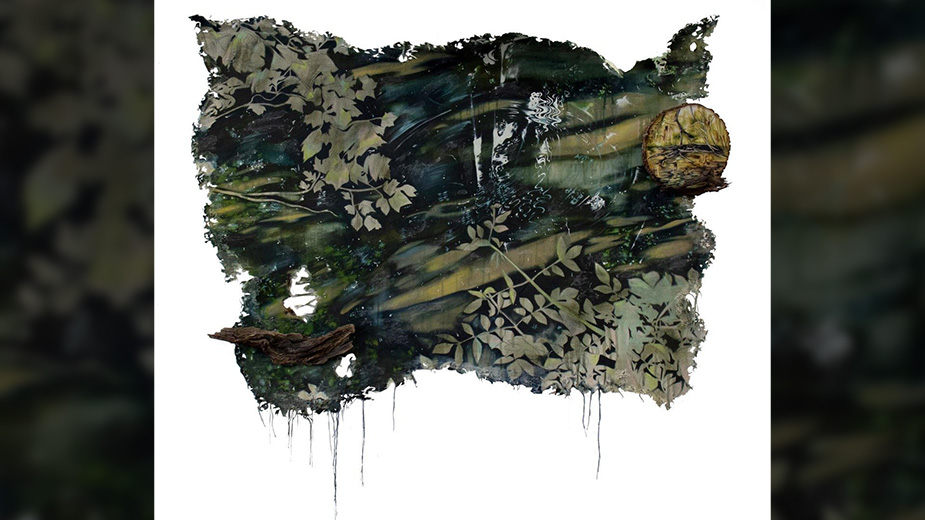Historical Society Program Examines Quack Medicine
YOUNGSTOWN, Ohio – A belt for ironizing blood, bitters containing “electricity,” an Oxydonor to cure all nonterminal illnesses, a soothing syrup containing morphine and alcohol, and Hamlin’s highly alcoholic Wizard Oil, are just a few of the many quack medical treatments used in the 19th and 20th centuries.
More than 50 people gathered in the Tyler History Center’s ballroom for this month’s Bites and Bits of History lecture series, “Victorian Quack Medicine and the Birth of the FDA,” presented by the Mahoning Valley Historical Society.
Cassie Nespor, curator of the Youngstown State University archives and Melnick Medical Museum, covered popular patent medicine and home health devices used at the turn of the 20th century, and the federal government’s efforts to regulate them.
False medicine, or quack medicine, were popular during the Victorian era and included little to no science to back them up.
“Quack medicine, in my definition, is when people are intentionally trying to deceive you to use something to cure or help you feel better, but it doesn’t have any scientific basis or any physiological action in your body,” Nespor said.
In 1906, the Pure Foods and Drugs Act was passed by Congress following about 100 bills from over a quarter of a century aimed at combating abuses in the consumer product marketplace. The Food and Drug Administration was later given its current name in 1930, but it went through many changes over the years.
“It really portrayed that ideal that we need some kind of national organization that is going to test safety for us,” she said.
Nespor said when the FDA first began, it was mostly focused on food as people were starting to move away from local farms and early preservatives were beginning to be used. She said people kept lobbying for regulations to expand further, eventually covering medicine and cosmetics.
“I was surprised that the first federal regulation of heroin was in 1914, and it was through tax and not through any kind of FDA or safety regulations,” she said. “It was about taking the substance.”
While some of these ideas may have helped the users feel better, they did not help the problem it was intended for. Oftentimes, these devices instead would have harmful side effects.
“It still happens today,” she said. “There are still people giving alternative solutions to long-term chronic diseases or other things because we don’t have effective cures, or the treatment is long and expensive.”
In addition to equipment often making matters worse, knowledge of what sanitary measures needed to be taken was also minimal. Nespor said cupping and bleeding were popular treatments at the time, and due to lack of sanitation knowledge, many devices were being reused without proper cleaning.
“Medical credentials were not firmly established in the 1800s,” Nespor said.

Nespor said doctors could become certified by completed course lectures or through apprenticeships, which only required a couple years of shadowing. No particular tests or diplomas were required.
Advertisements also contributed to the wide usage of these medical tools, Nespor said.
“The advertisements could be very dramatic and extravagant, and appealed directly to the general public who could buy the products through the mail or over the counter at the drugstore,” she said.
Western medicine initially understood issues as an imbalance in one of the four bodily humors, Nespor said. These included blood, yellow bile, black bile and phlegm.
“The four humors were the basis of traditional medicine from Roman antiquity to the 1800s before germs were discovered,” she said. “It was just what people believed – that you need to be balanced in your life to be healthy and well.”
Nespor said many of the items used in the 19th and 20th century seem “laughable” now.
“The Ionaco belt is this giant coil that is heavy, and it’s covered in leather and you put it over your neck,” she said. “It is supposed to ironize your blood and turn your hair back to its regular color, which is a great laughing punch line.”
The presentation concluded with many audience members recalling some of the strange medical devices they had seen or heard of when they were younger. These included copper bracelets, magnets, mustard plaster, a version of NyQuil containing epinephrine and now outlawed over-the-counter medicine that contained morphine.
The Melnick Medical Museum is located on the ground floor of Cushwa Hall on YSU’s campus. It is open from noon to 3 p.m. Tuesday through Friday during the school semester, or by appointment during the summer.
The museum currently has five storage rooms of items including uniforms, clothing, large medical devices, machines and handheld tools used by medical professionals. Nespor said they have about 900 boxes of those small tools.
Nespor can be reached by phone or email at 330 941 3788 or [email protected].
For more information on the museum, click HERE.
Pictured at top: Cassie Nespor, curator of the Youngstown State University archives and Melnick Medical Museum, holds an antique cupping device.
Copyright 2024 The Business Journal, Youngstown, Ohio.



